-
 Bitcoin
Bitcoin $115100
-2.99% -
 Ethereum
Ethereum $3642
-1.38% -
 XRP
XRP $3.027
-5.51% -
 Tether USDt
Tether USDt $1.000
-0.05% -
 BNB
BNB $763.4
-1.32% -
 Solana
Solana $177.2
-5.42% -
 USDC
USDC $0.9999
-0.02% -
 Dogecoin
Dogecoin $0.2247
-6.47% -
 TRON
TRON $0.3135
0.23% -
 Cardano
Cardano $0.7824
-4.46% -
 Hyperliquid
Hyperliquid $42.53
-0.97% -
 Stellar
Stellar $0.4096
-6.09% -
 Sui
Sui $3.662
-2.61% -
 Chainlink
Chainlink $17.63
-3.57% -
 Bitcoin Cash
Bitcoin Cash $536.3
2.94% -
 Hedera
Hedera $0.2450
0.34% -
 Avalanche
Avalanche $23.23
-3.15% -
 Litecoin
Litecoin $112.2
-1.23% -
 UNUS SED LEO
UNUS SED LEO $8.976
-0.30% -
 Shiba Inu
Shiba Inu $0.00001341
-2.72% -
 Toncoin
Toncoin $3.101
-2.44% -
 Ethena USDe
Ethena USDe $1.001
-0.05% -
 Uniswap
Uniswap $10.08
-1.97% -
 Polkadot
Polkadot $3.938
-2.77% -
 Monero
Monero $323.9
0.87% -
 Dai
Dai $0.9999
-0.02% -
 Bitget Token
Bitget Token $4.481
-1.69% -
 Pepe
Pepe $0.00001199
-5.94% -
 Aave
Aave $288.2
-0.68% -
 Cronos
Cronos $0.1279
0.36%
What does it mean that the K-line breaks through the lower track of ENE?
When the K-line breaks below the ENE's lower band, it signals potential oversold conditions or strong bearish momentum, requiring confirmation from volume and other indicators to avoid false breakouts.
Jul 25, 2025 at 10:42 am
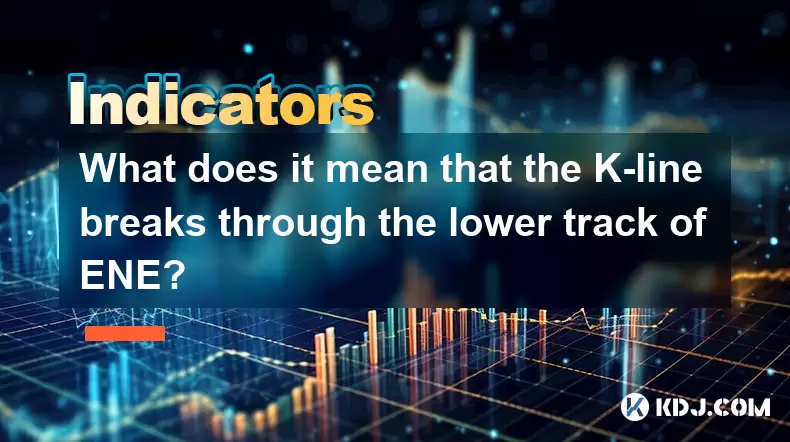
Understanding ENE and Its Components
The ENE (Envelope) indicator is a technical analysis tool used in cryptocurrency trading to identify potential overbought and oversold conditions. It consists of three lines: the upper band, the middle line, and the lower band. The middle line is typically a moving average, often a 25-period simple moving average (SMA), while the upper and lower bands are set at a fixed percentage (commonly 10%) above and below this middle line. Traders use ENE to visualize price volatility and determine whether an asset is trading near its perceived upper or lower limits.
When the K-line (candlestick) breaks through the lower track of the ENE, it signals that the price has moved beyond the predefined lower boundary. This movement suggests that the cryptocurrency may be entering an oversold territory, indicating strong downward momentum. The width of the envelope adjusts based on market volatility, so a breakout below the lower band may reflect either a sharp decline or an extension of a bearish trend.
Implications of a K-Line Breaking the Lower ENE Band
A break below the lower ENE band is generally interpreted as a bearish signal. It means the current closing price has fallen significantly below the average trading range established by the indicator. This could imply that selling pressure is overwhelming buying interest, possibly driven by negative news, market panic, or technical deterioration in the asset’s price structure.
However, such a breakout does not automatically mean continued decline. In highly volatile crypto markets, prices often overshoot their expected ranges. Therefore, a break below the lower ENE might also suggest that the asset is temporarily oversold, increasing the likelihood of a short-term bounce or correction. Traders watch for confirmation signals such as volume spikes or candlestick reversal patterns (e.g., hammer, bullish engulfing) to assess whether the breakout is part of a sustained downtrend or an overreaction.
How to Identify a Valid Breakthrough Below ENE
Not every touch of the lower ENE constitutes a meaningful breakout. To determine validity, traders should consider the following:
- Ensure the entire body of the K-line closes below the lower band. A wick or shadow dipping slightly below is not sufficient.
- Check the volume accompanying the breakout. A significant increase in trading volume strengthens the signal’s reliability.
- Confirm the breakout across multiple timeframes. For example, a daily chart breakout supported by a 4-hour chart breakdown increases confidence.
- Look for confluence with other indicators, such as RSI dropping below 30 (indicating oversold conditions) or MACD showing bearish crossover.
Using these criteria helps filter out false signals caused by market noise or short-term volatility, especially common in low-cap cryptocurrencies.
Practical Steps to Respond to a Lower ENE Breakout
When the K-line breaks through the lower ENE band, traders can take several analytical and operational steps:
- Open your trading platform (e.g., Binance, TradingView) and load the chart of the cryptocurrency in question.
- Apply the ENE indicator by navigating to the indicators panel, searching for “Envelope,” and setting the parameters (e.g., period 25, deviation 10%).
- Observe the most recent candle to confirm it has closed below the lower band.
- Switch to a lower timeframe (e.g., from daily to 4-hour) to analyze short-term momentum and look for reversal signs.
- Set up alerts using the platform’s alert function: click on the ENE indicator, select “Create Alert,” and configure it to trigger when the price closes below the lower band.
- Evaluate your position—if holding long, consider risk management strategies like stop-loss adjustment; if seeking entry, wait for confirmation before opening a short or preparing for a rebound.
These steps ensure a structured and data-driven response rather than emotional decision-making.
Common Misinterpretations and Risk Factors
One major misconception is assuming that a break below the ENE lower band automatically predicts a reversal. While it may indicate oversold conditions, in strong downtrends, prices can remain below the lower band for extended periods. This phenomenon, known as indicator riding, occurs when the market is in a prolonged bearish phase, and the ENE bands fail to contain the price.
Another risk involves parameter sensitivity. Using a deviation percentage that is too narrow (e.g., 5%) may generate frequent false breakouts due to normal volatility. Conversely, a too-wide deviation (e.g., 15%) might delay signal generation. Traders should backtest ENE settings on historical data of the specific cryptocurrency to optimize performance.
Market manipulation, especially in less liquid altcoins, can also trigger artificial breakouts. Sudden sell walls or coordinated dumping may push prices below the ENE temporarily, only to reverse quickly. Therefore, corroborating with order book data and volume analysis is essential.
Combining ENE with Other Technical Tools
To enhance the accuracy of signals from ENE breakouts, integration with complementary indicators is recommended:
- RSI (Relative Strength Index): If RSI is below 30 when the K-line breaks the lower ENE, it reinforces oversold conditions.
- MACD (Moving Average Convergence Divergence): A bearish MACD crossover concurrent with the breakout adds weight to the downtrend signal.
- Support and Resistance Levels: If the breakout occurs near a known support zone, it may indicate a potential bounce; if below a broken support, it confirms bearish continuation.
- Bollinger Bands: Comparing ENE with Bollinger Bands can provide insights into volatility compression or expansion, helping distinguish between genuine breakouts and noise.
Using multiple tools reduces reliance on a single indicator and supports more robust trading decisions.
Frequently Asked Questions
What is the default setting for the ENE indicator in most trading platforms?
Most platforms default to a 25-period moving average with a 10% deviation for both upper and lower bands. This means the upper band is 10% above the SMA, and the lower band is 10% below. Users can adjust these values based on asset volatility and trading style.
Can the ENE indicator be used effectively on all cryptocurrencies?
The ENE works best on moderately volatile assets with consistent trading volume. Highly erratic or low-liquidity cryptocurrencies may produce too many false signals. It is advisable to test ENE on stable major coins like BTC or ETH before applying it to smaller altcoins.
Does a K-line breaking the lower ENE always require immediate action?
No. Immediate action is not mandatory. Traders should wait for confirmation—such as the next candle closing below the band or a volume surge—before executing trades. Premature reactions can lead to losses during fakeouts.
How does the ENE differ from Bollinger Bands?
While both use upper and lower bands around a moving average, ENE uses a fixed percentage deviation, whereas Bollinger Bands use standard deviation, making them adaptive to volatility. Bollinger Bands expand and contract dynamically, while ENE bands maintain proportional distance based on percentage.
Disclaimer:info@kdj.com
The information provided is not trading advice. kdj.com does not assume any responsibility for any investments made based on the information provided in this article. Cryptocurrencies are highly volatile and it is highly recommended that you invest with caution after thorough research!
If you believe that the content used on this website infringes your copyright, please contact us immediately (info@kdj.com) and we will delete it promptly.
- Kiyosaki's Crypto Playbook: Ditching Paper for Real Assets Like Bitcoin
- 2025-07-25 22:30:11
- Satoshi-Era Whales Stir the Bitcoin Pot: What's the Deal?
- 2025-07-25 22:30:12
- Pi Coin Value in Indian Rupees (INR) 2024: Decoding the Hype
- 2025-07-25 21:45:50
- Crypto Investing: Top Picks and Meme Coin Mania in '25
- 2025-07-25 21:52:07
- Ark Invest's Portfolio Rebalance: Coinbase, Block, and the Crypto Shift
- 2025-07-25 21:52:07
- Bitcoin's Wild Ride: Sell-offs, Volatility, and What's Next
- 2025-07-25 21:55:18
Related knowledge

How to interpret that the KDJ D line is downward for a long time but the price is sideways?
Jul 25,2025 at 07:00pm
Understanding the KDJ Indicator and Its ComponentsThe KDJ indicator is a momentum oscillator widely used in cryptocurrency trading to assess overbough...

What does it mean that the KDJ indicator forms a double bottom at a low level?
Jul 25,2025 at 05:08pm
Understanding the KDJ Indicator in Cryptocurrency TradingThe KDJ indicator is a momentum oscillator widely used in cryptocurrency trading to identify ...
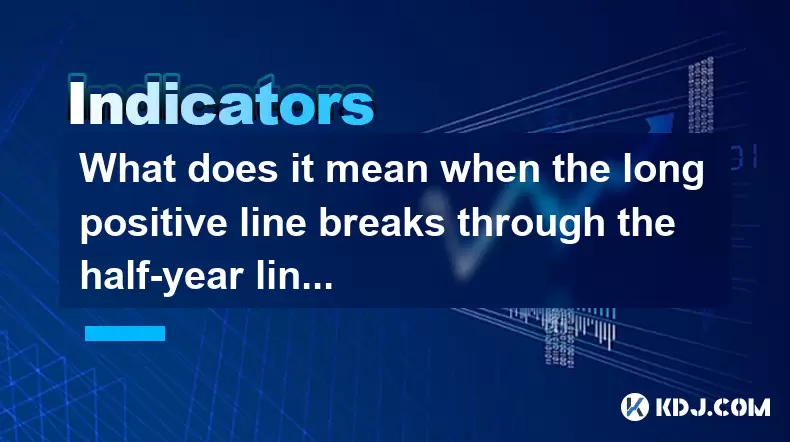
What does it mean when the long positive line breaks through the half-year line and then steps back?
Jul 25,2025 at 06:49pm
Understanding the Long Positive Line in Candlestick ChartsIn the world of cryptocurrency trading, candlestick patterns play a vital role in technical ...
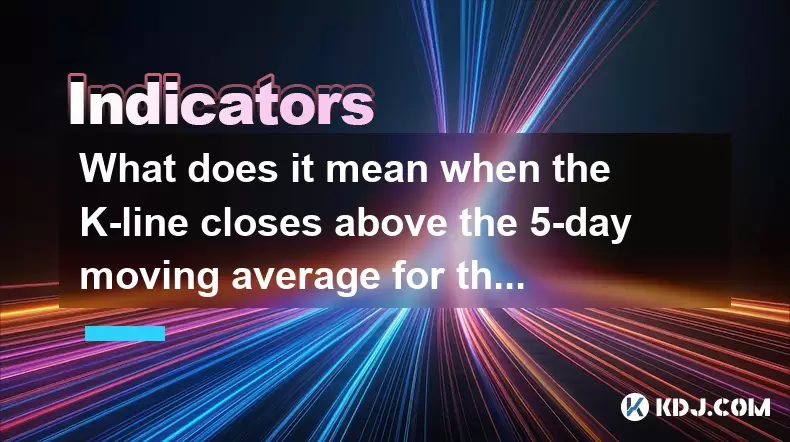
What does it mean when the K-line closes above the 5-day moving average for three consecutive days?
Jul 25,2025 at 10:07pm
Understanding the K-line and 5-day Moving AverageThe K-line, also known as a candlestick, is a critical charting tool used in technical analysis to re...
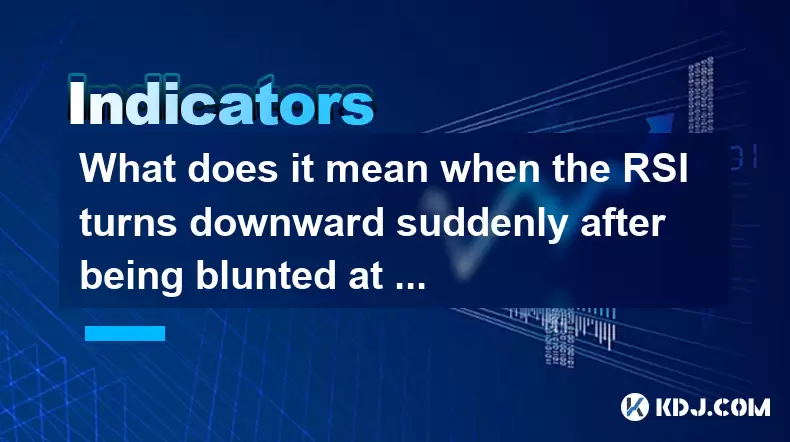
What does it mean when the RSI turns downward suddenly after being blunted at a high level?
Jul 25,2025 at 04:00pm
Understanding the RSI and Its Role in Technical AnalysisThe Relative Strength Index (RSI) is a momentum oscillator that measures the speed and change ...
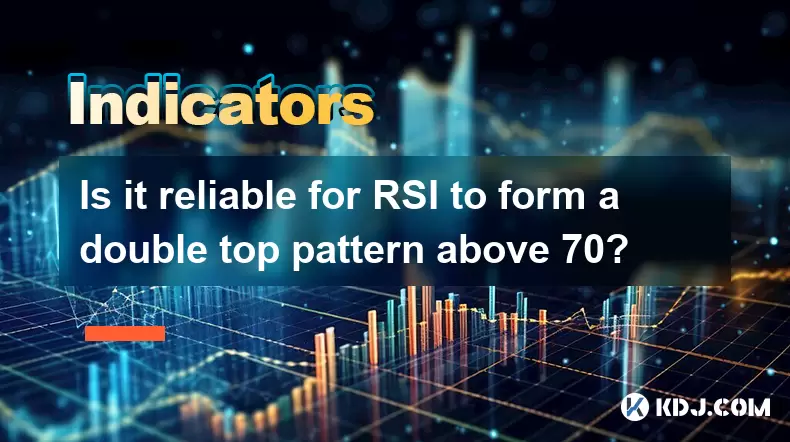
Is it reliable for RSI to form a double top pattern above 70?
Jul 25,2025 at 04:49pm
Understanding the RSI Indicator and Its Role in Technical AnalysisThe Relative Strength Index (RSI) is a momentum oscillator that measures the speed a...

How to interpret that the KDJ D line is downward for a long time but the price is sideways?
Jul 25,2025 at 07:00pm
Understanding the KDJ Indicator and Its ComponentsThe KDJ indicator is a momentum oscillator widely used in cryptocurrency trading to assess overbough...

What does it mean that the KDJ indicator forms a double bottom at a low level?
Jul 25,2025 at 05:08pm
Understanding the KDJ Indicator in Cryptocurrency TradingThe KDJ indicator is a momentum oscillator widely used in cryptocurrency trading to identify ...

What does it mean when the long positive line breaks through the half-year line and then steps back?
Jul 25,2025 at 06:49pm
Understanding the Long Positive Line in Candlestick ChartsIn the world of cryptocurrency trading, candlestick patterns play a vital role in technical ...

What does it mean when the K-line closes above the 5-day moving average for three consecutive days?
Jul 25,2025 at 10:07pm
Understanding the K-line and 5-day Moving AverageThe K-line, also known as a candlestick, is a critical charting tool used in technical analysis to re...

What does it mean when the RSI turns downward suddenly after being blunted at a high level?
Jul 25,2025 at 04:00pm
Understanding the RSI and Its Role in Technical AnalysisThe Relative Strength Index (RSI) is a momentum oscillator that measures the speed and change ...

Is it reliable for RSI to form a double top pattern above 70?
Jul 25,2025 at 04:49pm
Understanding the RSI Indicator and Its Role in Technical AnalysisThe Relative Strength Index (RSI) is a momentum oscillator that measures the speed a...
See all articles

























































































